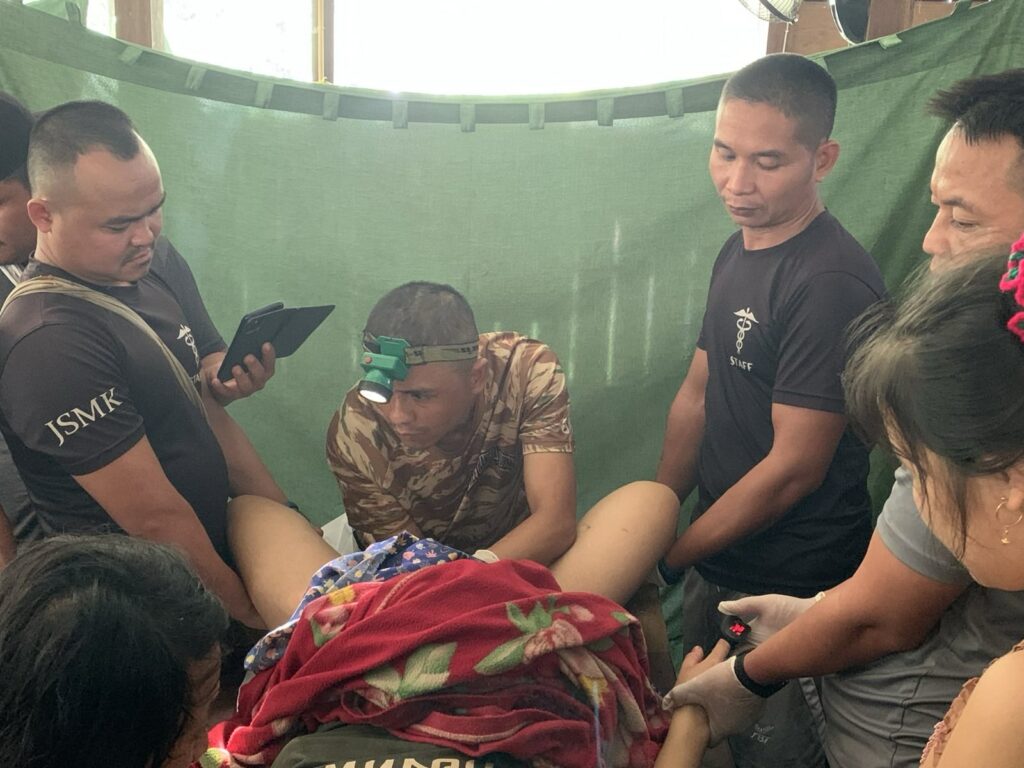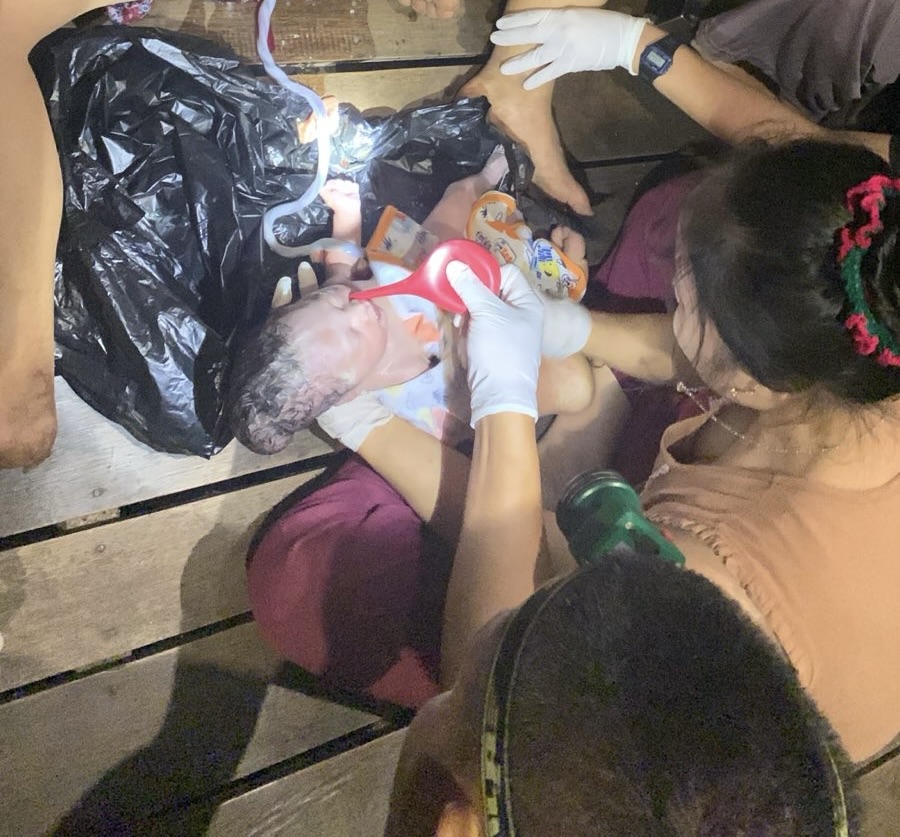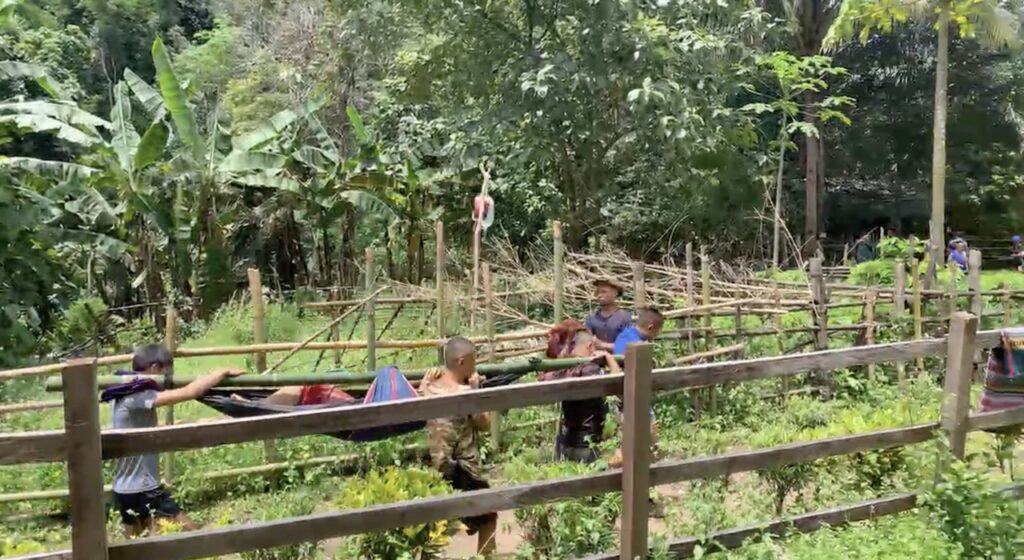JSMK Stories: A Long, Dangerous Labor and Delivery in the Jungle.
2 September 2024
Karen State, Burma

The Jungle School of Medicine Kawthoolei (JSMK) is a small hospital and medical training facility founded by FBR in a remote site of eastern Burma. JSMK primarily provides training for rural medics and treats patients from villages in the surrounding mountains. Most of the time the villagers who come in for treatment don’t have any other nearby options for medical care. This was the case for Naw Lu Htoo.
Naw Lu Htoo, an 18-year-old woman, came to JSMK at 1000 on September 2nd to seek help delivering her baby. Her water had broken a full 24 hours before she was brought to the hospital and, though she was feeling regular contractions, she had only dilated three cm and was in severe pain. The JSMK workers that urgently got to work on her case were senior medics and students, including the head of obstetrics at JSMK, Naw Mu Gay Htoo. They soon identified that Naw Lu Htoo was suffering from preeclampsia. Preeclampsia is a condition unique to pregnant women that presents with high blood pressure and results in potential damage to organs, and, during labor, internal bleeding, and even seizures. The birth usually does away with the condition but the complications can easily be life-threatening for mother and child. In a more context offering more advanced medical infrastructure, this condition would probably have been noticed earlier and mitigated, but in the mountains of eastern Burma that was a luxury Naw Lu Htoo did not have. The team began carefully monitoring Naw Lu Htoo and her baby’s vital signs, hoping the labor would progress normally but bracing for the worst.
JSMK staffing varies throughout the year, from the local staff of senior medics and medical students to an on-site team of foreign visiting doctors and surgeons who help with harder cases and train the students. At this time there were no doctors or surgeons present so the team had to use their in-house experience and calls to four outside medical experts to seek advice.
By 1700, the delivery had barely progressed and Naw Lu Htoo’s blood pressure was very high. The medics gave her blood pressure medication, antibiotics, and fluids to help stabilize her. By midnight she still was not fully dilated so the team gave her labor augmentation medications. They prayed for the baby to stay healthy and come quickly. Only half of their prayer was answered. After 42 hours of labor, Naw Lu Htoo had a healthy baby boy. Jo Wallis, a medical professional advising over the phone, quipped, “Boys are always trouble.”

The team breathed a sigh of relief, feeling that mom and baby would both make it. Naw Lu Htoo hadn’t yet delivered the placenta, a crucial part of the labor process, but sometimes that does take time. In all likelihood, they were through the worst danger. Maybe they could finally relax.
An hour later, the placenta had still not delivered and Naw Lu Htoo’s blood pressure was now dropping dangerously low. The little boy was healthy but at this rate, Naw Lu Htoo might die. Over the phone, Dr. Bruce Woodall advised manual extraction. Our team of senior medics at JSMK have a vast well of experience but none of them had done this before. It would be risky but they had to try.
The team brought Naw Lu Htoo to the operating room and placed her under anesthesia. Meanwhile, her blood pressure kept diving. Her hemoglobin levels were dangerously low. They gave her a blood transfusion and placed her on vasopressors, trying to halt the drop.
One of the most senior medics at JSMK, Toh, began the procedure with a doctor in the U.S., Dr. Bruce Woodall on a Facetime call to advise. Toh did his best but ultimately the placenta could not be extracted. Dr. Woodall diagnosed this as possible placenta accreta, which happens when the placenta is too attached to the uterine wall muscles. This now required a surgeon. But that was a problem for two reasons.
First, the nearest surgeon, one of our friends from Earth Mission (EM), was five and a half hours away. Second, he was at an EM forward clinic treating soldiers wounded in battle; he couldn’t come to JSMK. The clinic had been set up in fairly close proximity to the battle for Hpapun to better treat the wounded. For Naw Lu Htoo, this meant a long and bumpy trip, in critical condition, toward an active battle. The JSMK team prayed, secured EM’s permission to bring the patient, gave Naw Lu Htoo another blood transfusion, and set off.

By the grace of God, Naw Lu Htoo arrived safely. The EM surgeon successfully extracted the placenta, and Naw Lu Htoo and baby both survived. Praise Jesus!
One of the JSMK team reflecting on the experience said:
“Thanks to God both baby and mom are alive. With this patient, we thank God so much that He gave us friends that help us help people. We are so thankful that we have Star-Link to contact doctors, midwives, and surgeons while caring for Naw Lu Htoo. When our senior medic tried placenta manual removal, he was guided by a JSMK doctor in the USA via Facetime. Thank you to all doctors, midwives, and JSMK staff involved in this case. With all of you and God, this woman and child are safe.”
We are also so thankful to God – for his protection of Naw Lu Htoo and her baby through this dangerous birth and for the amazing men and women who cared for her so well. We are thankful for the supporters that make JSMK possible. Without the right medications and communications equipment, Naw Lu Htoo and her baby would not have survived.
Thank you and God bless you,
The Free Burma Rangers
